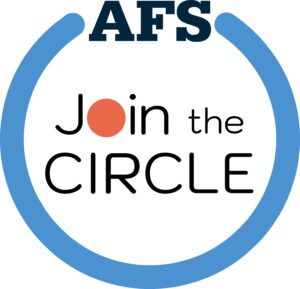Mixing chemistry and current events does not always produce a stable solution, especially in fast-moving high school chemistry courses. But Upper School Chemistry Teacher and Science Department Chair Lisa Ammirati saw an opportunity to incorporate conversations around social justice in her 10th grade chemistry course by talking about the ongoing water crisis in Flint, MI.
In this conversation, Lisa discusses her recently published article in Chemistry Solutions, wherein she shares resources about her semester-long curriculum that returns frequently to the water crisis as a way to engage students with practical examples of the topics they discuss for chemistry teachers in the United States who are interested in trying it themselves.
In your Chemistry Solutions resource article, you reflect on the importance of incorporating live problems and discussions around social justice in science courses. How did you arrive at the idea to incorporate into your chemistry class?
Lisa Ammirati: I’m always on the lookout for ways to connect chemistry with current events, even if that’s not always easy. I think students respond more strongly to course work when they can see the applications right in front of them. There’s plenty of chemistry in the news on any given day, but it’s often only tangentially related to the material we cover in the classroom. That poses a real problem, because I don’t have a lot of time to spare in the classroom—I need to get through a core curriculum that equips students with the concepts they need before they move on to the next course. Still, I want to show students the material impact of chemistry on a day-to-day basis.
When the crisis in Flint, Michigan, was unfolding, I realized that it was literally what I was teaching. The chemistry curriculum really aligns with aspects of the water crisis: From solubility to stoichiometry, this was a topic where so many different topics converged—chemistry, current events, social justice—so I asked myself, how can I integrate it into my classroom?
Your article discusses how you return to the Flint water crisis over the course of a semester each time students learn a new application chemistry concept. How do you structure the discussions in your units?
LA: We start by engaging in some readings regarding what happened in Flint. We discuss what constitutes environmental racism and what information we need to make those determinations. That part is not something I had a lot of experience teaching about, so I have received a lot of excellent coaching from colleagues in the past about how to navigate those conversations in a respectful and equitable way.
Then, when we’re looking at solution concentration, we talk about how the water in Flint had 20 parts per billion of lead and what that means quantitatively and qualitatively. Then, we learn about solubility, so we look at the solubility differences of lead compounds. Why is it that when coating the pipes with phosphates, the lead doesn’t leach into the water? These are concepts I’m teaching already, but this project gives us this shared context for how all those concepts are tied into one another and how they all actually relate to your daily life.
What has the reaction been with students?
LA: Our students at AFS have a lot of experience having hard conversations, so it makes my job actually a lot easier. We always start with a set of ground rules, and most of the time they generate and set those ground rules better than I do. They get passionate about it. There’s a lot of outrage, and they’re shocked to learn that this is something that officials knew about. They worry about whether it could happen, or is happening, here. And it helps them connect with their coursework in a different way: I’ve even had a few kids for whom chemistry has not really been their thing, and they’ve really dove in with this project. It connects to something that they care deeply about, and that gives them an “in” where they might have otherwise bounced off of the material.
Has the reflection process sparked any ideas for iterating further next year?
LA: I think I want to have more closure to the project. Our students generated so many interesting questions along the way that weren’t always tied to what we were doing at the moment, but were still worth addressing. So we started compiling those questions and thinking about ways to revisit them. For example, like I said before, a lot of the students want to know if anyone was held accountable, the answer to which is truly current—like some of these charges were just recently brought. So I’d like to include some reading about that, and also do more research to find readings to talk about lead in Philly schools.
I certainly haven’t perfected this idea. It’s always evolving, and hopefully it will continue to evolve. I have been adding more layers and refining it over the years, finding new ways to introduce concepts and bring new elements into the conversation. But I submitted this article now because I felt like it was in a place where it was really coherent and that I had something to share that I could stand behind.
For my own purposes, I wanted to put together my thoughts, compile it into a single unit, and I thought that this is something that other people weren’t doing and could. I felt like I had something legitimate to share, and I hope others find it useful as well.
Click here to read Lisa’s resource article in Chemistry Solutions
